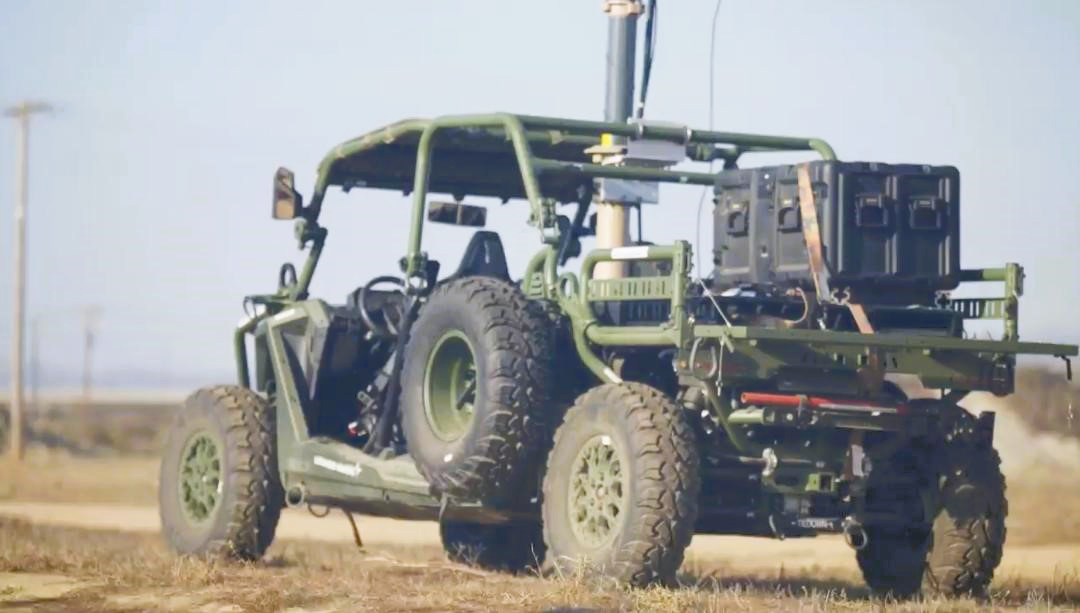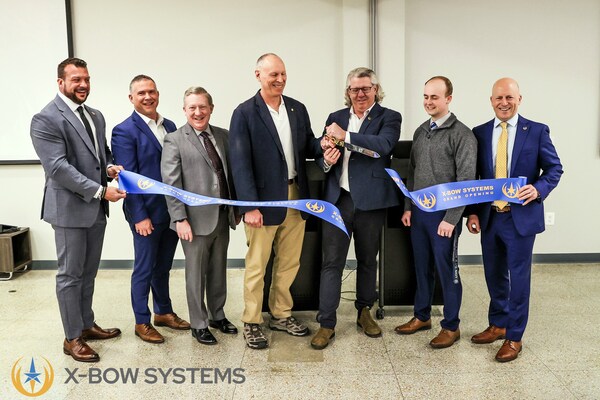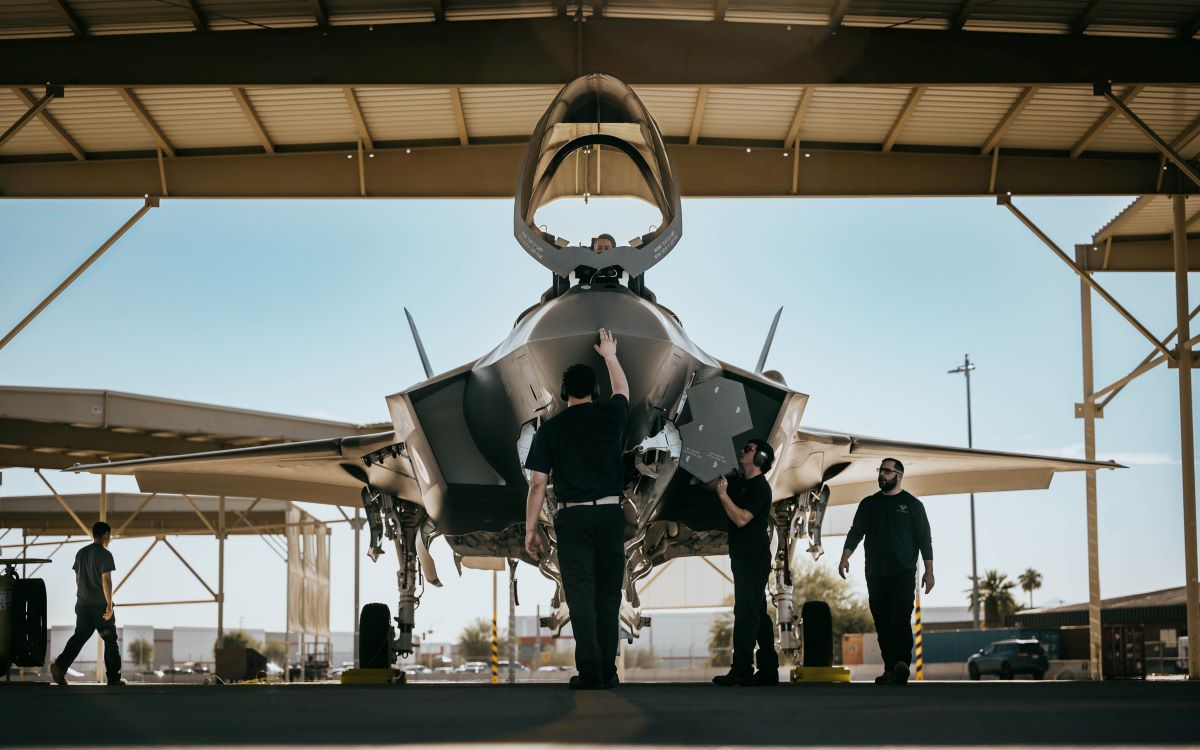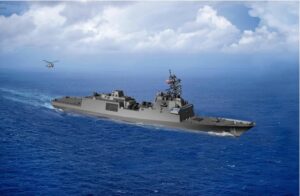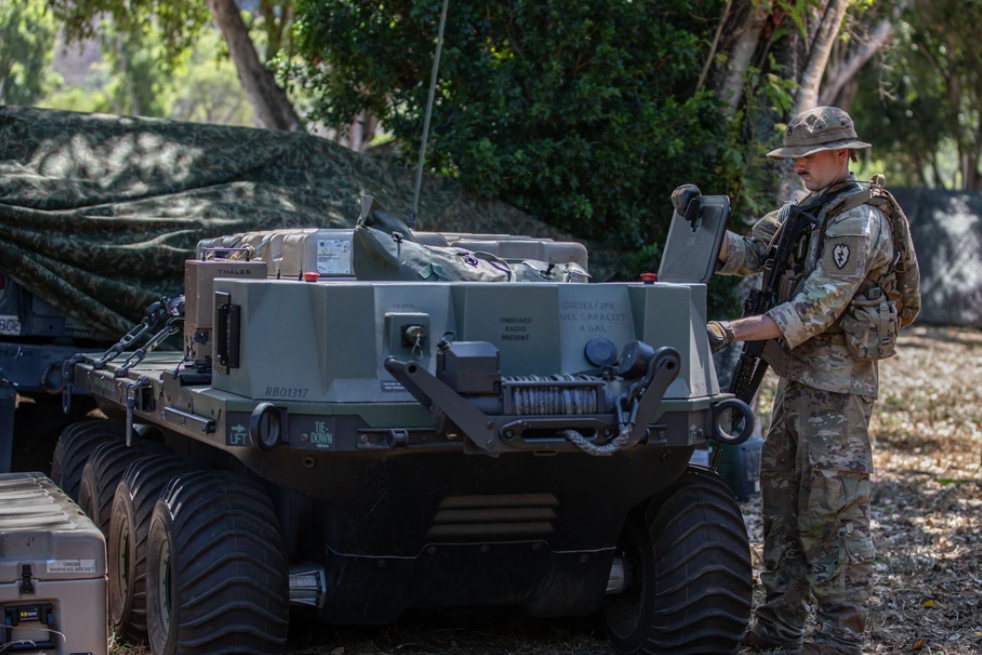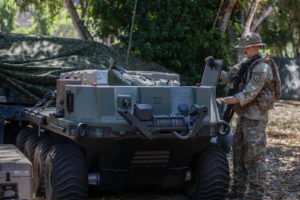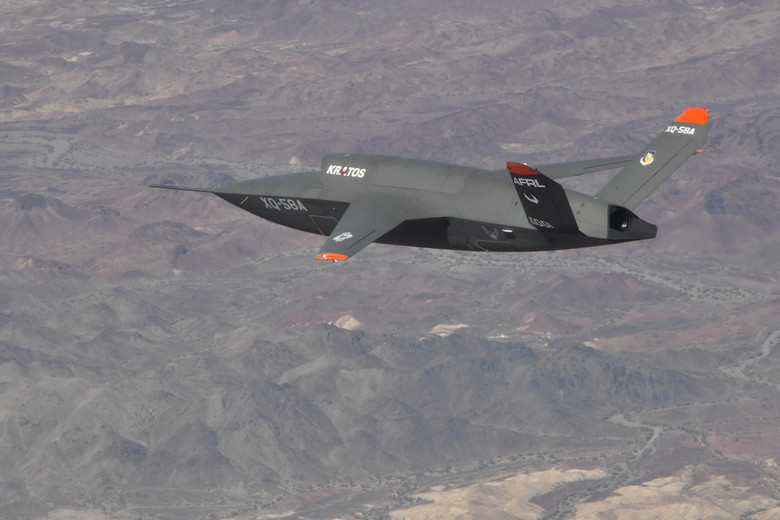AFA Warfare Symposium. While top DoD and military service officials have often been absent from conferences in the last four months following the November election, the Air and Space Forces Association (AFA) annual warfare symposium in Aurora, Colo., may be too high profile and perennially popular for the Trump administration to have put its finger on the scale. Next week’s all-star AFA line-up includes U.S. Air Force Chief of Staff Gen. David Allvin, Chief of Space Operations Gen. Chance Saltzman, Air Force Gen. Kenneth Wilsbach—the head of Air Combat Command, Air Force Gen. Duke Richardson—the head of Air Force Materiel Command, Air Force Gen. Kevin Schneider—the head of Pacific Air Forces, Air Force Gen. James Hecker—the head of U.S. Air Forces in Europe, Air Force Gen. Gregory Guillot—the head of U.S. Northern Command and NORAD, Air Force Gen. John Lamontagne—the head of Air Mobility Command, Air Force Lt. Gen. Dale White—the uniformed deputy to the service acquisition chief, Air Force Lt. Gen. Leah Lauderback—the Air Force deputy chief of staff for ISR and cyber effects operations, and Lt. Gen. Dave Harris—the deputy chief of staff for Air Force Futures.
SHIPS Act Coming Again.
A bipartisan and bicameral group of legislators soon will re-introduce the SHIPS for America Act that is aimed at significantly expanding domestic production of U.S. merchant vessels, boosting the U.S. shipbuilding industrial base for military and commercial vessels by establishing a 25 percent investment tax credit for shipyard investments, making new investments in the maritime workforce, and more, Rep. John Garamendi (D-Calif.), said last Wednesday during a House Armed Services Committee hearing. The bill will “probably” be introduced in April, he said. Garamendi and Rep. Trent Kelly (R-Miss.), chairman of the HASC Seapower and Projection Forces panel, and Sens. Mark Kelly (D-Ariz.) and Todd Young (R-Ind.), are leading the charge on the SHIPS Act. The legislators introduced the bill in December, but it was not acted on and the start of a new Congress in January requires the legislation to be re-introduced.
New Hypersonic Site Soon. Following its recent $1.5 billion win of the Defense Department’s Multi-Service Advanced Capability Hypersonic Test Bed (MACH-TB) 2.0, Kratos Defense & Security Solutions will announce in the near future a new hypersonic production, test, integration and execution campus in the U.S. with the customer where a lot of the work under the program will be done, Eric DeMarco, the company’s chief, said last week. Kratos will be investing in the facility in 2025 and 2026, and expects to “generate nominal revenue” later in 2025 as it begins to “receive and integrate certain long-lead hypersonic system, solid rocket motors, and other elements we ordered previously in anticipation of the award,” he said during the company’s fourth quarter earnings call. The company’s MACH-TB 2.0 work will begin at existing Kratos facilities and the program will ramp up in 2026 and accelerate in 2027 once the new facility is running, he said.
…And Another. In addition to the new MACH-TB 2.0-related facility, Kratos later this year hopes to identify and report on a location for another hypersonic system facility, DeMarco said. He called this effort Project Ares, and said customer funded work will begin in 2026.
Epirus, Peraton Partner. Epirus, which is developing high-power microwave systems to defeat drone swarms, and Peraton, a systems engineering and mission support provider, are in a strategic teaming agreement for Peraton’s contract that supports the Defense Department’s Information Analysis Center. The center collects, analyzes and disseminates scientific and technical information and is a repository that supports research and development efforts across DoD. Epirus will provide its expertise in directed energy, autonomous systems, modeling and simulation, and advanced intelligent management. Peraton was selected as an awardee on the Defense Technical Information Center IAC multiple award contract that has a $48 billion ceiling.
Unmanned Maritime News. Britain’s Zero USV in February launched Oceanus12, the first vessel of what it plans to be a high-endurance open ocean fleet of fully autonomous uncrewed surface vessels. The vessel has an endurance exceeded 2,000 nautical miles, a cruise and sprint speeds of six and 10 knots, respectively, and a payload capacity up to 2,000 pounds. The core of Oceanus12 is Marine AI’s software. The vessel is mission agnostic and can perform surveys, border control, defense, asset monitoring, geophysical exploration, and more. The company plans to lease or charter the Oceanus12 vessels.
…Launch and Recovery. Unmanned surface vessel (USV) builder Maritime Tactical Systems (MARTAC) and Sealartec, which makes autonomous launch and recovery systems (ALARS), have unveiled a system that enables MARTAC’s 38-foot Devil Ray medium USV to autonomously launch and recover its eight and 12-foot MANTAS T8 and T12 USVs. The ALARS allows for launch and recovery of the USVs in up to sea state four. “Combining this ALARS capability with our advanced AI autonomy allows us to deploy USVs at scale to perform fully autonomous missions hundred or even thousands of miles away from personnel,” Bruce Hanson, MARTAC’s CEO, said in a statement.
…Battery Power. Canada’s Kraken Robotics has received a combined $34 million in orders from three customers to provide pressure tolerant batteries for use on uncrewed underwater vehicles (UUVs). The largest order, and the company’s largest battery order ever, $31 million, is from an unnamed customer that provides UUVs to the defense industry. The other orders are from commercial clients with UUVs. “With the emergence of new larger classes of UUVs and greater adoption of these platforms in naval fleets, reliable subsea power requirements are increasing,” Greg Reid, Kraken’s president and CEO, said in a statement. “These new orders illustrate the robust customer demand we have for Kraken’s SeaPower batteries across the U.S., Europe, and Asia Pacific.”
…New Player. Germany’s FLANQ last Friday emerged from stealth, introducing a European-based provider of artificial intelligence autonomous maritime defense products. The company’s commercial-off-the-shelf product suite includes USVs, underwater drones, and sensor payloads, all powered by FLANQ’s AI software and hardware stack. The company’s founders were focused on marine autonomy for the commercial sector and are now applying their capabilities to European security. The company says its products include edge data processing, field proven platforms, payloads to detect, monitor, and classify surface and subsurface threats, and logistics and support.
Maritime C-UAS. Israel’s D-Fend Solutions last week introduced a version of its EnforceAir2 drone detection and mitigation for use in maritime and naval environments. The EnforceAir2 Maritime radio frequency-based system features the company’s cyber-based, non-kinetic, non-jamming, counter-drone takeover technology. Equipment added for use in harsh environmental conditions at sea include a maritime radome antenna, and maritime cradles and cables. The company said EnforceAir2 Maritime seamlessly integrates and interoperates with existing naval defense systems, and that its non-disruptive technology is useful at sea, and in ports, harbors, and along critical transportation routes.
People News. Boeing last week said that Stephanie Pope, who had been chief operating officer since January 2024 and then added the role of president and CEO of the Commercial Airplanes segment that March, is no longer COO. Her biography on Boeing’s website says she was COO “during a period of transition” and is now “focusing exclusively on the commercial airplanes business.” A new COO has not been named. Lockheed Martin’s Terran Orbital business unit has appointed Richard Ullman as senior vice president for finance and business operations. He previously was with Boeing as senior director of finance and divisional chief financial officer for Space Mission Systems. Finally, retired Navy Adm. Doug Small has joined the board of advisers of Core4ce, which provides cybersecurity, data science and analytics, engineering, and operations support to the defense and federal civil sectors. Small’s last assignment with government before retiring in 2024 was as commander of Naval Information Warfare Systems Command.
L3Harris Dividend. L3Harris Technologies last Friday increased its quarterly dividend just over 3 percent to $1.20 per share from the current $1.16. “This dividend increase represents our 24th consecutive annual dividend increase and is part of our previously announced plant to further prioritize the return of cash to shareholders,” Chairman and CEO Chris Kubasik said in a statement. The dividend is payable March 21.
Skyraider II. L3Harris Technologies’ AT-802U Sky Warden aircraft for U.S. Special Operations Command’s Armed Overwatch mission will carry the moniker OA-1K Skyraider II when they reach the field–a delivery to start this spring when the first plane reaches Air Force Special Operations Command at Hurlburt Field, Fla. The Skyraider IIs are to perform close air support, precision strike, and armed intelligence, surveillance, and reconnaissance. AFSOC is to have 62 of the aircraft–a reduction of 13 from the 75 planned. Skyraider II “renews the rugged and versatile nature of the A-1 Skyraider, which was in service from 1946 to the early 1980s,” AFSOC said.
sUAS Payloads. The Army on Feb. 25 issued a new Request for Information seeking industry’s input as it looks to develop common interface standards for a Picatinny Common Lethality Integration Kit (CLIK) to integrate modular mission payloads (MMP) on small Uncrewed Aerial Systems (sUAS). The Picatinny CLIK is intended to “simplify integration and qualification of MMPs for sUAS, enabling rapid prototyping, experimentation and fielding,” the Army writes in the RFI. “Responses to the RFI will be evaluated to inform common interface definitions with the Picatinny Common Lethality Integration Kit based on the size, weight, and power requirements of the existing payload,” the RFI states.
Trump/CR. As Congress faces a March 14 shutdown deadline, President Trump has endorsed taking up a “clean” stopgap funding measure that would keep the government open through the end of September. “As usual, Sleepy Joe Biden left us a total MESS. The Budget from last YEAR is still not done. We are working very hard with the House and Senate to pass a clean, temporary government funding Bill (“CR”) to the end of September. Let’s get it done!” Trump wrote in a social media post. Trump’s support for a long-term CR arrives has the House and Senate have yet to reach a deal on how to move forward on full-year fiscal year 2025 appropriations. Under a CR, the Pentagon is blocked from initiating new start programs or procurement rate increases and must operate under funding levels from the prior fiscal year.
Trump-Zelenskyy Meeting. President Trump on Feb. 28 called off a planned press conference with Ukrainian President Volodymyr Zelenskyy, with Kyiv’s leader asked to leave the White House early following a tense meeting in the Oval Office with Trump and Vice President JD Vance. Zelenskyy and Trump were expected to sign a new agreement at the White House establishing a framework granting the U.S. greater access to critical minerals in Ukraine, before Trump accused the Ukrainian leader of not expressing sufficient gratitude for the U.S.’ support providing aid to assist in its fight against Russia. The terse meeting and canceled press conference casts further doubt on the future of U.S.’ security assistance efforts for Ukraine. Defense Secretary Pete Hegseth said earlier in February that European partners must provide “the overwhelming share” of future weapons aid to Ukraine.
Gulf Yard Visits. Acting Assistant Secretary of the Navy for Research Development and Acquisition (ASN-RDA) Brett Seidle and Rear Adm. Tom Anderson, Program Executive Officer Ships, visited three Gulf Coast shipyards last week: Austal USA’s shipyard in Mobile, Ala.; Eastern Shipbuilding Group’s (ESG) shipyard in Panama City, Fla.; and Bollinger Shipyards’ facility in Pascagoula, Miss. The visits were announced by the companies on Feb. 26, 27 and 28, respectively. Austal said the officials specifically toured their aluminum and newer steel assembly lines, 10 vessels under construction and aircraft elevators to be installed on the future Ford-class aircraft carriers CVN-80 and -81 and the last Independence-variant Littoral Combat Ship, the future USS Pierre (LCS-38). LCS-38 is due for Navy delivery in May. Eastern Shipbuilding is building the first four Heritage-class Offshore Patrol Cutters for the U.S. Coast Guard but is also seen as a potential competitor in upcoming smaller Navy vessel programs. Bollinger is currently building the T-AGS oceanographic ships and Auxiliary Personnel Lighter (APL) berthing barges for the U.S. Navy and the Polar Security Cutter for the Coast Guard.
…Look To Expansion. All three yards said they are interested in how to help expand Navy shipbuilding. Austal said company leaderships discussed the company’s growing variance in design and shipbuilding contracts with the Navy officials while also highlighting Austal has submarine modules in production. Separately, Joey D’Isernia, CEO of ESG, said his company is “proud to play a vital role in sustaining and expanding America’s shipbuilding capacity. This visit reaffirms the importance of investment in U.S. shipbuilding, and we stand ready to meet the nation’s needs.” Bollinger president and CEO Ben Bordelon said the visit “provided a unique opportunity to demonstrate our skilled American workforce, capabilities and ongoing commitment to fulfilling the critical needs of our national defense.”
Phelan On Lasers. President Trump’s nominee to be the next Secretary of the Navy specifically supported directed energy programs like the High-Energy Laser with Integrated Optical Dazzler and Surveillance (HELIOS) system in his Senate confirmation hearing on Feb. 27. He referenced a recent Navy test of HELIOS in the Red Sea against drone targets “which was very effective. I think it’s a very smart way to deter drone attacks. Using $2 million missiles to take out $30,000 drones is not a a model that’s going to survive.”
Serco Frigate Support. The Navy plans to award Serco-IPS Corporation a sole source cost-plus-fixed-fee contract for Constellation-class frigate support services related to planning, design and construction, according to a Feb. 26 notice. Serco will specifically provide network architecture engineering support and cybersecurity, system and ship integration test programs, acquisition and life cycle support for the frigates and weapons systems acquisition. Other listed tasks include cost estimating, engineering analysis for small combatant ships and associated weapon systems, and Design Site Support. The notice said this is being solicited on a sole source basis “because the requirement is a bridge action.” The work covers a 30-day base year period of performance with a 100-day option period.
Sub Down Under. The Virginia-class submarine USS Minnesota (SSN-783) arrived at HMAS Stirling on Feb. 25 for the first of several SSN routine port visits to Australia set to occur this year. This is also the first of two planned U.S. SSN visits to that base in 2025, all part of increasing experience and training to ramp up to being able to establish Submarine Rotational Force-West there to then in turn prepare Australia to support and field Virginia-class submarines in the 2030s and later SSN-AUKUS boats in the 2040s.The next SSN visit is set to be three-week submarine maintenance period.
AUKUS BigBear. The firm BigBear.ai said it will participate in the upcoming Australian-based Exercise Talisman Sabre 2025 in its Resilient Autonomy and AI Technologies (RAAIT) trials section with its ConductorOS data and sensor orchestration platform. The company said the system helps enhance AI-enabled capabilities for AUKUS forces in multi-domain missions. This will be the 11th iteration of the exercise, with 19 participating countries. The company added its ConductorOS system will specifically update AI models in real-time to improve coordination between sensors and shooters and help ensure air and ground units make better operational decisions. It said the system will integrate with current ground and air-based U.S. DoD Programs of Record and Australian unmanned vehicles.
